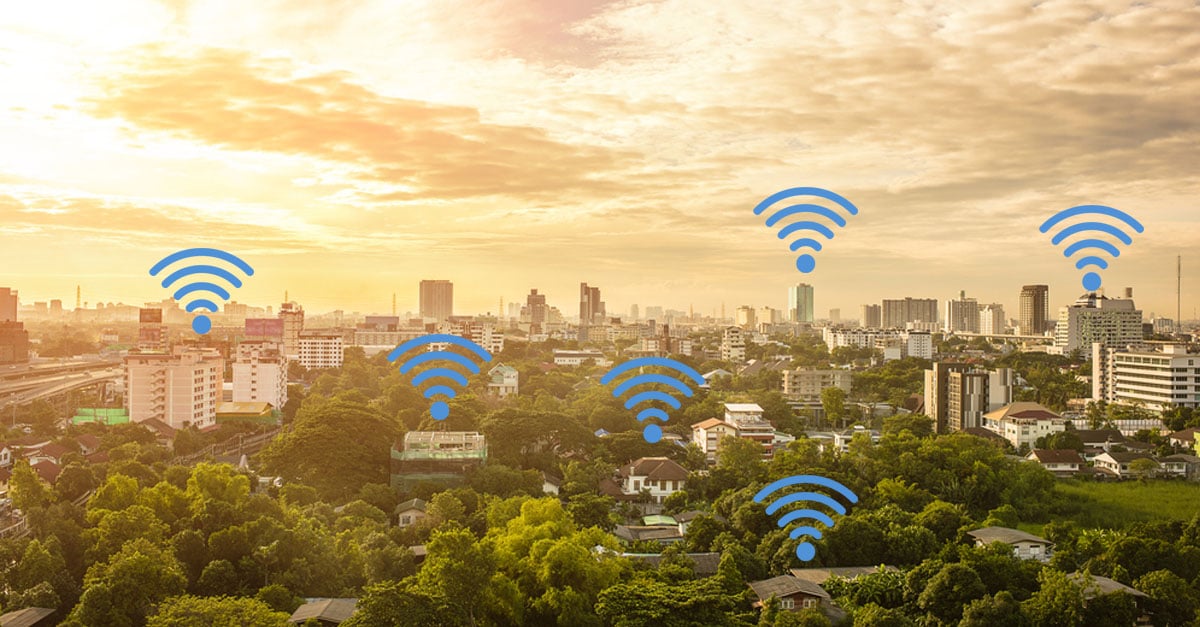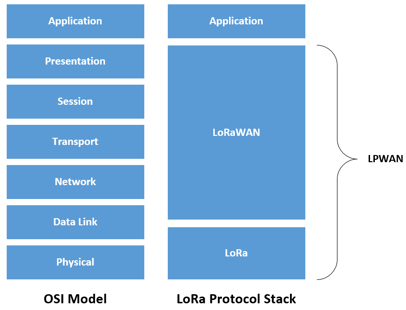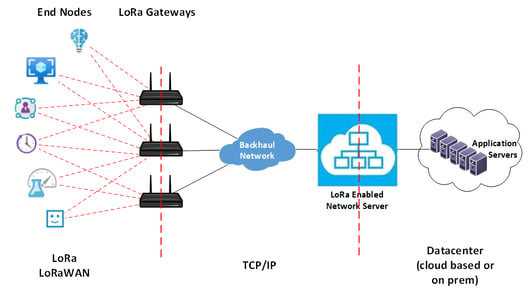
LoRa delivers some extremely attractive functionalities, especially for a specialized set of applications that are currently experiencing an explosion in growth. LoRa, which is short for “long-range,” is a low-power wide-area network modulation technique. In simpler terms, it is a method of transmitting data using wireless signals over long distances while consuming very low power.
In this article, we look at LoRa as a technology and examine how it is becoming an important enabler for some of the most innovative applications of today and tomorrow.
LoRa basics
LoRa belongs to a group of technologies that deliver low-power wide-area networks (LPWANs). An LPWAN is a network that provides long-range, low-bitrate wireless communication with extremely low power consumption at exceptionally low costs. As a comparison, some competing technologies include Sigfox, DASH7, and NarrowBand IoT (NB-IoT) developed for cellular networks by the 3GPP.
LoRa defines the modulation technique used to encode data onto a carrier signal to achieve the desired communication characteristics. For you network types out there, if we were to place LoRa on the OSI model, it would reside on the Physical Layer and a portion of the Data Link Layer. However, LoRa on its own is not enough. Higher-layer communication protocols are needed to take advantage of this modulation technique and make communication possible.
LoRaWAN basics
These higher-layer protocols are contained within a technology known as LoRa Wide-Area Network or LoRaWAN. To avoid confusion, these similar terms are depicted in the following diagram and are put within the framework of the well-known OSI model:

As can be seen from the diagram, LoRa — and LPWAN technologies in general — do not follow the internet model that is based on IP and related protocols. LoRa uses its own protocol stack, albeit a partially open one, to enable such communication. Its components include:
LoRa – This describes the modulation technique used by LoRa to modulate data onto a wireless carrier wave. This methodology functions primarily on the Physical Layer and is a proprietary technology developed by Cycleo, a company in Grenoble, France, which was later acquired by Semtech.
LoRaWAN – This composes the upper layer protocol stack that leverages the LoRa modulation technique. This is an open architecture protocol stack that manages communication between LoRa gateways (which we’ll get to shortly) and end-node devices. LoRaWAN is maintained and developed by the LoRa Alliance.
LPWAN – LoRa and LoRaWAN together deliver a complete LPWAN solution.
Network topology
A typical LoRa deployment looks similar to the following network topology:

The LoRa and LoRaWAN component is the portion of the network that allows the end nodes to wirelessly connect to specialized devices called LoRa gateways. Each node can connect to multiple gateways to deliver redundancy and greater coverage. Any duplication of packets that may result from this arrangement is resolved in the network server.
The backhaul network is composed of more conventional technologies such as Ethernet, Wi-Fi, 4G/5G cellular, microwave, and others, upon which TCP/IP communication protocols are used.
The backhaul connects the gateways to a LoRa-enabled network server, which manages the entire network. It dynamically manages network parameters to adapt to changing conditions. It is also responsible for establishing secure data transport connections between the end devices and itself, as well as between itself and the application servers on the cloud. End devices register to the network server, which ensures the authenticity of each device on the network and the integrity of every message sent. Note that the network server plays a management role only and does not “see” any of the actual application data.
The application servers are responsible for accumulating, interpreting, and acting upon the collected data. These are highly specific to the particular application of each end device.
Capabilities and characteristics
Now that you have an overview of the theoretical foundation for what LoRa is and how it works, let’s take a look at what it is capable of.
- It is designed for long distances, up to 10 miles in rural areas and up to three miles in urban areas, depending upon how deep within buildings devices may be placed.
- A very large number of devices can connect to LoRa gateways (on the order of hundreds, depending on the type of devices).
- Low power consumption and high-capacity batteries mean that battery life approaches a LoRa device’s lifetime, often in excess of 10 years. This allows for a “deploy and forget” mentality, where devices require zero maintenance after deployment.
- Applications leveraging LoRa require extremely low bitrates, on the order of several bits per second. Such applications typically “check in” every several minutes or even longer, so data communication is by no means continuous, but on the contrary is sporadic and in short bursts. This is one of the aspects that increases device number capacity because devices can “speak” in turn rather than overwhelm a gateway with simultaneous data streams.
- Cost is very important, especially for applications that require hundreds or even thousands of deployed devices. Low-cost electronics manufacturing has allowed for the development of simple and economic devices. These devices are often extremely specialized, performing only a single function, such as measuring temperature or determining GPS coordinates.
Applications
LoRa and its related technologies are ideally suited to deliver applications that belong to areas such as:
- The Internet of Things
- Smart cities
- Smart grids and smart metering
- Vehicular automation
- Smart and digital agriculture
All of these are machine-to-machine (M2M) communication applications that enable automation and increase efficiency, each within the area where they are applied.
LoRa had some initial teething problems which limited scalability and caused interference between different LoRa networks operating within proximity to each other. However, most of these issues have been worked out, delivering a robust, reliable, and effective wireless network. Even so, it will face stiff competition from cellular-based LPWAN technologies, such as those being rolled out with 5G networks.
Conclusion
Our world is becoming all the more interconnected. Connections no longer correspond to specific people, but to objects, things, and entities of all types. LoRa and its related technologies are poised to bring about this interconnectivity in a way that has never been experienced before, resulting in a more connected and more efficient world.
You may also like:
SD-WAN: What it is and why you need it
Using wireless bridging to obtain internet connectivity
VoIP and IoT – A marriage of innovation









Comments